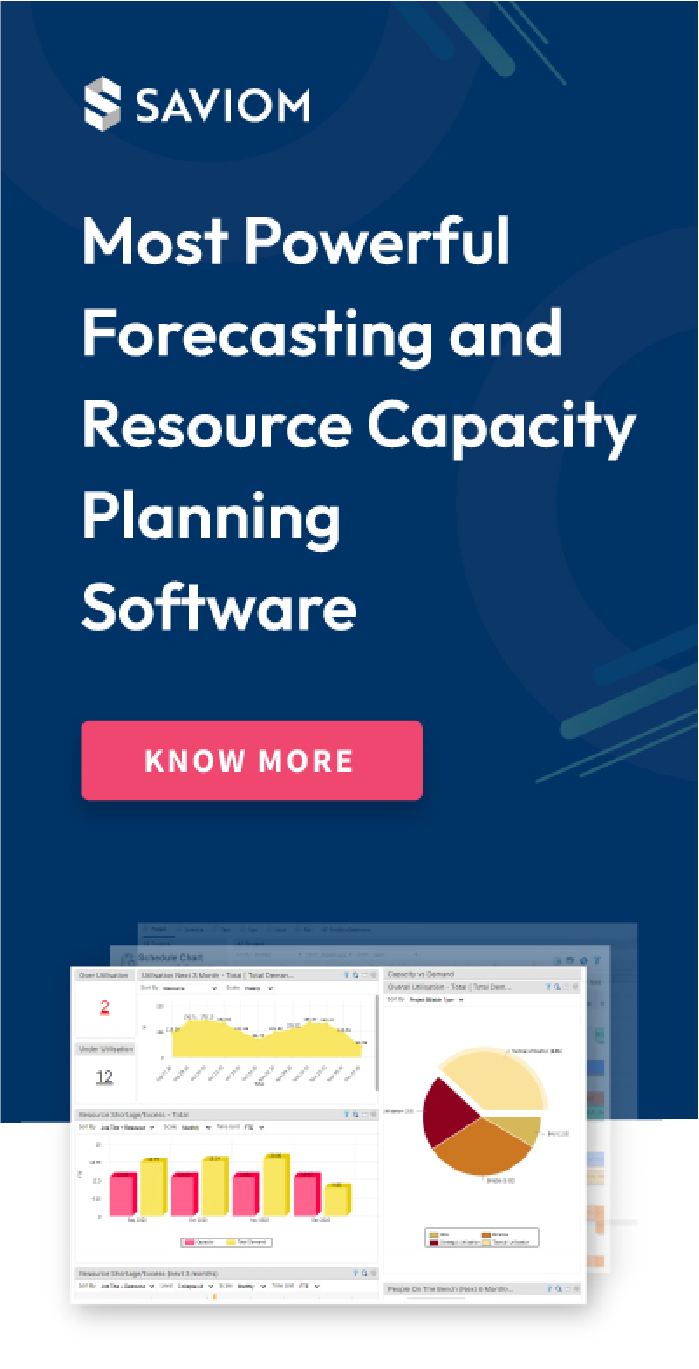The Challenge
Siemens AG is a German multinational tech company that specializes in automation and digitalization across various industries and services. Initially, Siemens relied on the MS project approach for resource and project planning purposes. Even though MS Excel has impressive capabilities, it posed several complications for the company.
This marked a pivotal moment for the company, as they realized that MS Project was not meeting their needs. Subsequently, they transitioned to a custom-made Excel tool, which they relied on for the following two years. However, this new tool was not sophisticated enough to meet their requirements either. The user recalls,
“ Our Excel tool wasn’t convenient, and the reports it generated were limited. The changes and modification capabilities were limited so that we couldn’t use that tool. ”


About Siemens
Siemens AG, renowned for its engineering solutions in transportation, automation & control, medical diagnostics, etc., caters to a diverse clientele in over 190+ countries. With 165 years of experience as a global technology powerhouse, they have been at the forefront of innovation, leveraging state-of-the-art technologies to advance various sectors.
Their contributions have helped in the development of more sustainable power systems, efficient transportation networks, resilient buildings, etc., improving the quality of life for billions worldwide.
The Solution
Siemens AG was looking for a cost-effective tool to track workforce utilization levels efficiently and forecast future resource requirements proactively.
“It was time to find a more robust solution and based on a recommendation from their counterparts in Australia, they thought the SAVIOM tool might have the potential to help.“
So, Siemens purchased SAVIOM and installed the software at the end of 2012. They began running it seriously in 2013. In the user’s words-
“It was the combination of features, easy handling, and price making that made it attractive to management.“
Once they adopted the SAVIOM ERM tool, Siemens was able to streamline the process of finding the right resource for the right job.
“The main task to use the tool was to look into the future and see people’s utilization levels. We are using it as a short to mid-term tool so we can see our outlook for the upcoming six months or so. It was necessary for us to have a tool that gave us the capacity to make such future decisions.“
Saviom’s forecasting capabilities and utilization reports with color-coded heatmaps provided data-driven insights. This allowed line managers to make more confident, informed decisions and develop a better outlook over time.
The organization’s favorite feature of SAVIOM is how it has improved its handling of bookings.
The user stated,
“We are partially using this for booked vs actual analysis, which we are using for a variety of countries around the world. In certain areas, we are using the timesheet function, which allows you to see the utilization of our resources.“

Result: The company now schedules over 300 resources in four countries worldwide.
SAVIOM’s user-friendliness, easy-to-navigate, and simple-to-integrate features made it an agile and easy-to-use tool. Managers required minimal time, effort, and skill to start using the tool.
In addition, Saviom’s comprehensive features like scheduling chart, multi-dimensional view, integration capabilities with existing systems, and excellent customer support have streamlined the resource allocation process. This has led to improved efficiency, reduced scheduling conflicts, better resource utilization, and ultimately, enhanced productivity in Siemens.
Key Takeaways
Siemens AG sought an affordable tool to track resource utilization and forecast future resource requirements. Their adoption of the SAVIOM ERM tool led to significant improvements in its resource management processes.
“It’s inexpensive and an easy-to-handle tool that satisfies our requirements. The utilization aspects and the analysis and the combination of price and features make it very good“, says the user.
With its user-friendly interface, precise resource forecasting, and efficient allocation capabilities, complemented by an optimized workforce, the firm has streamlined its operations and bolstered its bottom line.






